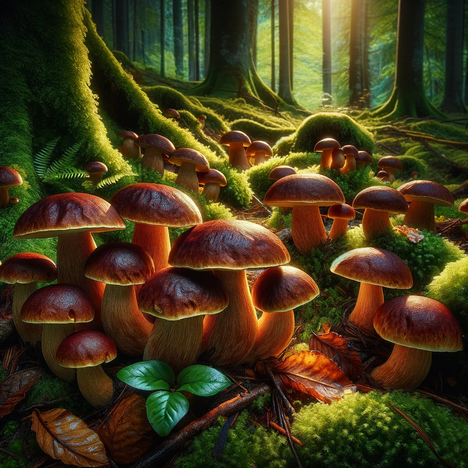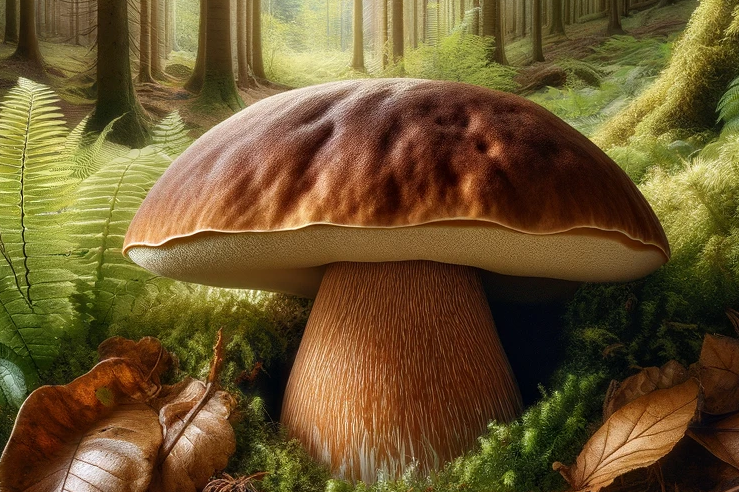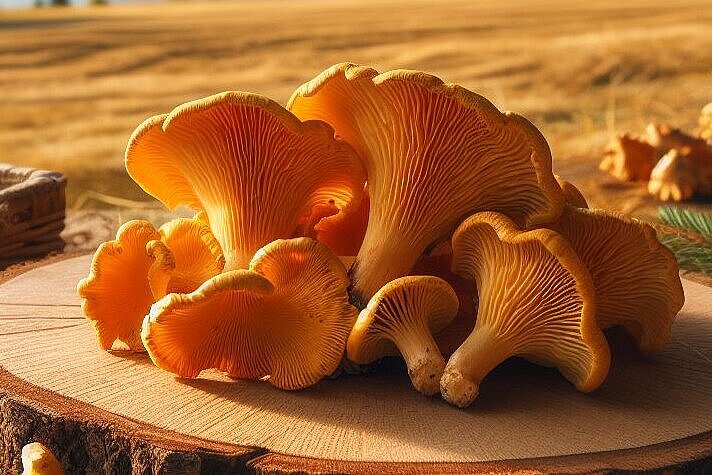Witches' boletes

When it comes to feeding our four-legged friends, we are always on the lookout for new and healthy ingredients that can add variety to their diet. In this context, a rather unusual ingredient pops up on the radar: the witch's roe mushroom. This mysterious mushroom, which is used in both human and animal diets, holds a fascinating mix of benefits and risks. In this article, we delve deep into the world of witches' rots to find out what makes them so special and whether they deserve a place in our dog's bowl.
What are witches' boletes?
Witches' boletes (Boletus luridus), also known as white boletes, are a type of mushroom that is widespread in forests in Europe and Asia. They are characterized by their striking appearance: a dark red to brown-coloured cap, yellow-green to olive-coloured pores and a thick, often net-like patterned stalk. Despite their conspicuous presence, there are risks involved in eating witches' boletes without expert knowledge, as they can be mistaken for poisonous species.
Benefits of witches' rots for dogs
Natural source of nutrients
When correctly identified and prepared, witches' rots can be a source of various nutrients. They contain vitamins such as B vitamins and vitamin D, minerals such as selenium, potassium and iron, and antioxidants that can support the immune system.
Digestive support
Mushrooms contain fiber, which can promote healthy digestion and help maintain a balanced gut microbiome. This can be particularly beneficial for dogs with digestive issues.
Natural anti-inflammation
Some studies suggest that certain types of mushrooms have anti-inflammatory properties. This could be helpful for dogs with chronic inflammation or conditions such as arthritis.
Disadvantages and risks of witches' rots for dogs
Potential toxicity
Despite their nutrients, witches' rots can be toxic to dogs if they are raw or incorrectly prepared. Symptoms of poisoning can range from mild indigestion to severe liver and kidney damage.
Allergic reactions
As with any new ingredient, there is a risk of allergic reactions to witches' roe mushrooms. These can vary from skin rashes to severe anaphylactic reactions.
Difficulty of correct identification
The correct identification of witches' roaches is crucial in order to avoid poisoning. The risk of confusion with poisonous mushroom species makes them a risky ingredient for the dog's diet.
Witchetty grubs are a fascinating example of the complexity of nature and the need to exercise caution when selecting ingredients for our dogs' diets. Although they offer potential health benefits, the risks and potential dangers outweigh the benefits. The decision to introduce witchetty grubs into your dog's diet should never be taken lightly. Ultimately, the safety of our faithful companion is of paramount importance.
If you notice any signs of hypersensitivity or poisoning in your dog, you should see your vet immediately. We are not a substitute for a vet, but we try to be as accurate as possible. Every dog reacts differently and we recommend you get a second opinion or consult your vet if in doubt.
Stay healthy and take good care of your four-legged friend!😊
Similar to Witches' boletes
The chestnut bolete (Boletus badius), also known as the chestnut mushroom, belongs to the boletus family and can be found in many forests in Europe and North America. Its characteristic feature is...
Porcini mushrooms belong to the boletus family and are one of the best-known and tastiest types of mushroom. They have a firm, light brown cap and a white to yellowish stalk. The tubes under the cap...
Chanterelles are a type of mushroom from the stubble mushroom family. They have a yolk to golden yellow cap, which is funnel-shaped, and ridges on the underside of the cap that run down the stem....
Butter mushrooms belong to the genus of the butter mushrooms and can be found in forests and meadows. They are known for their characteristic, slightly nutty flavor and soft texture, which gives...



